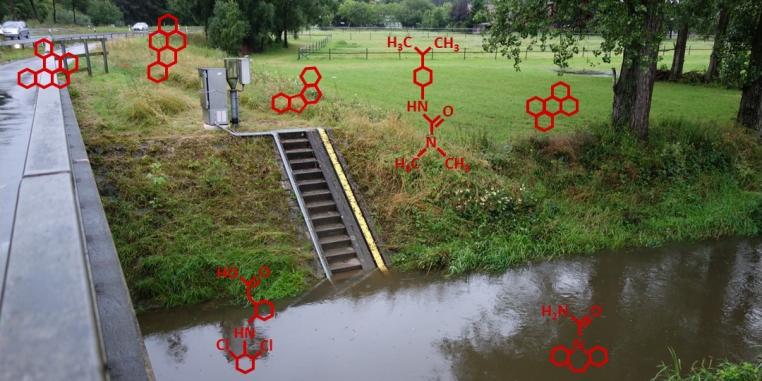
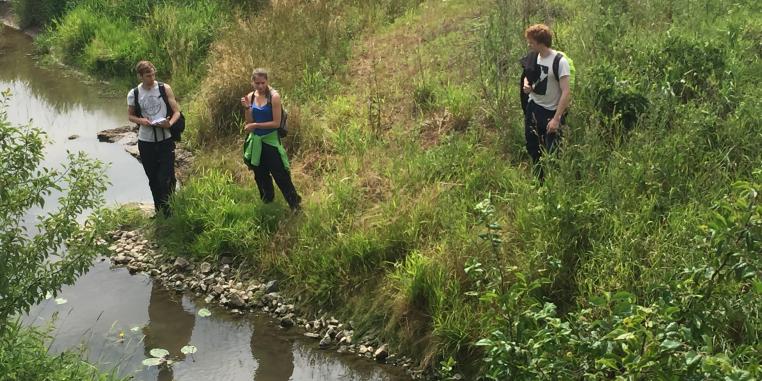
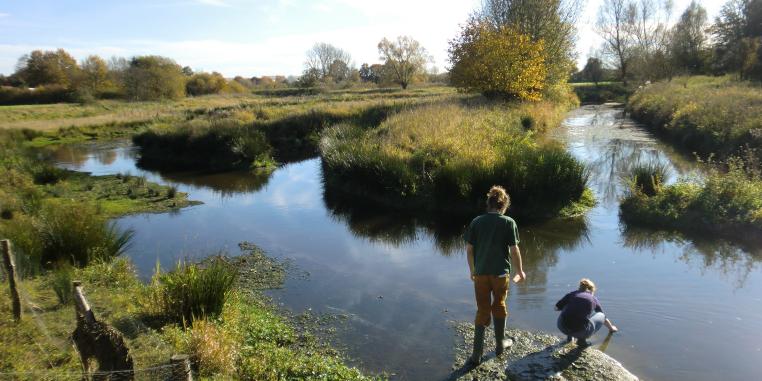


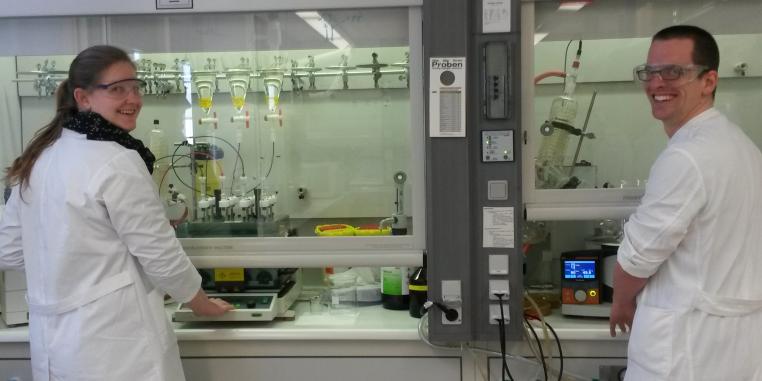
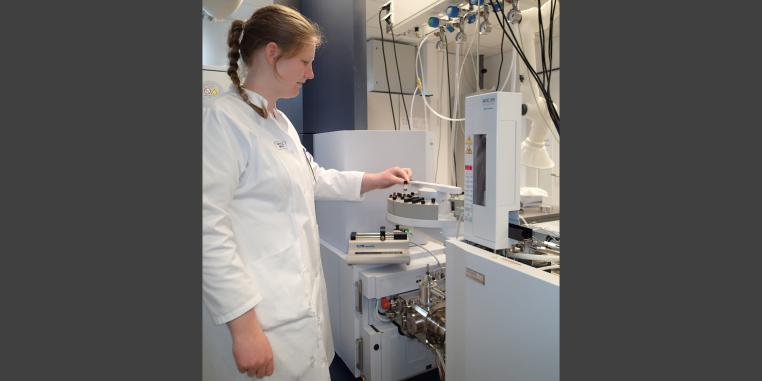
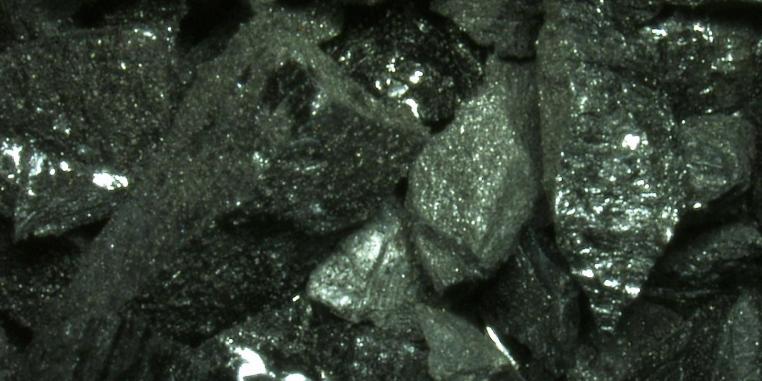



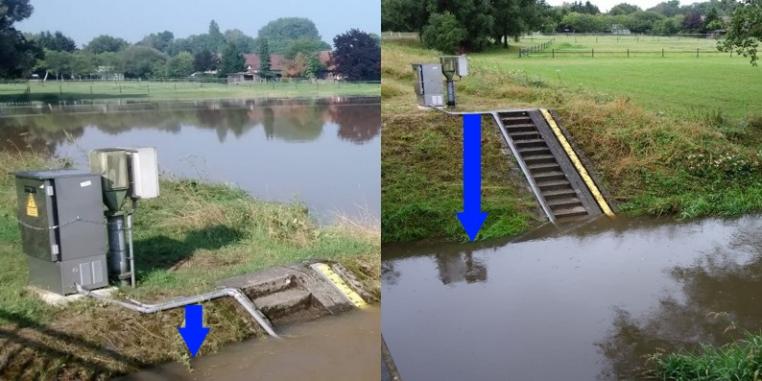
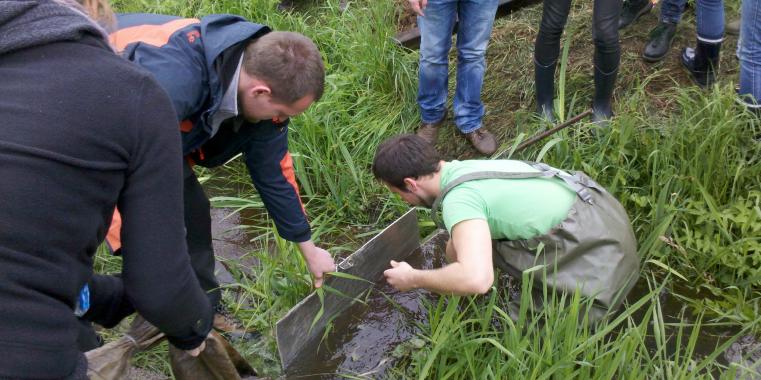
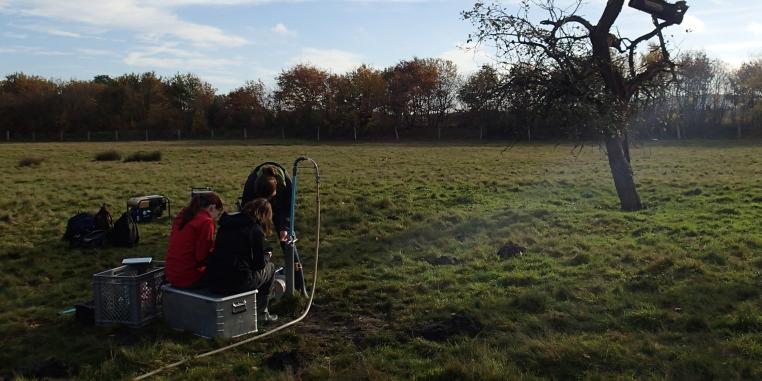
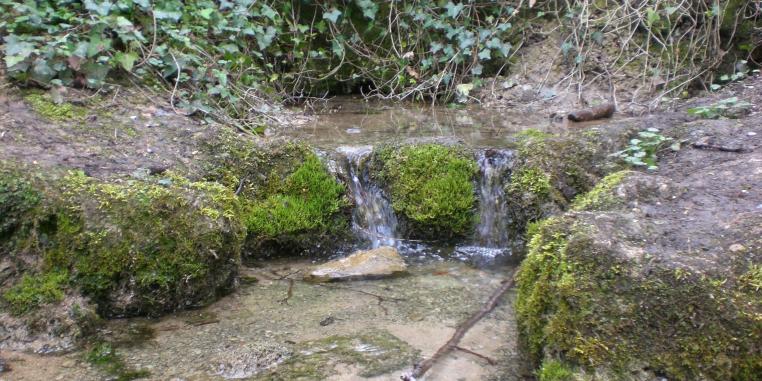
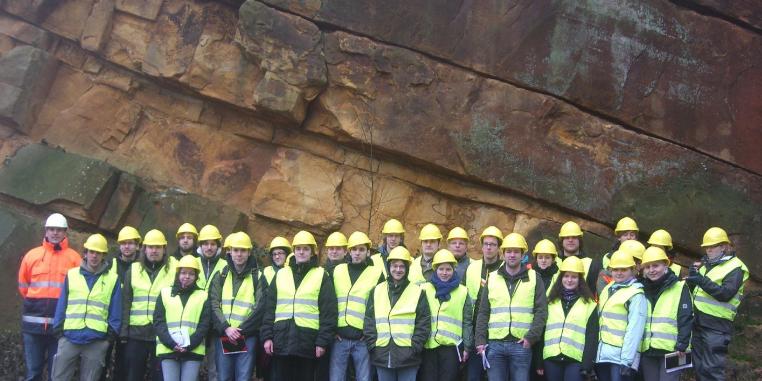
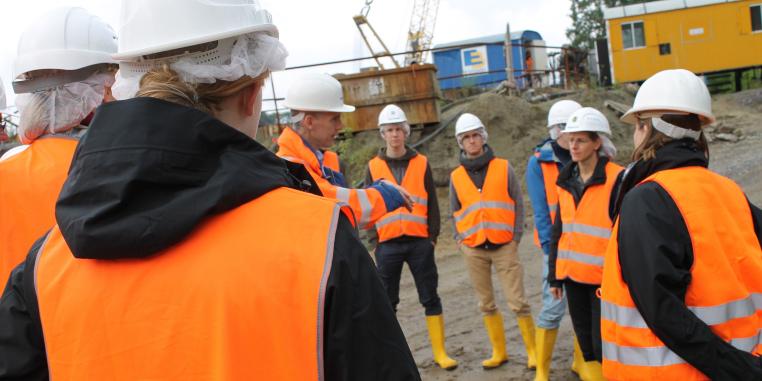
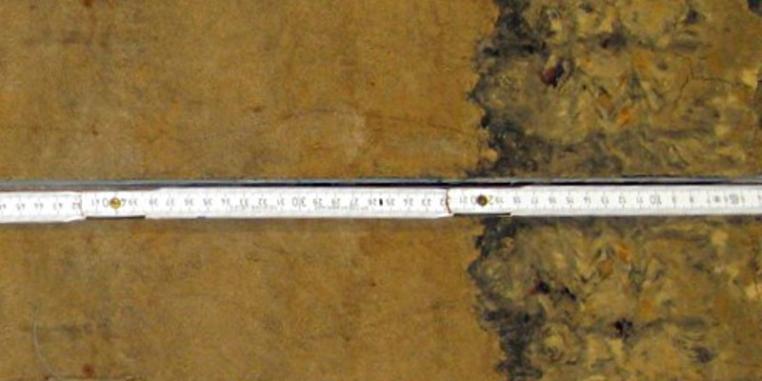
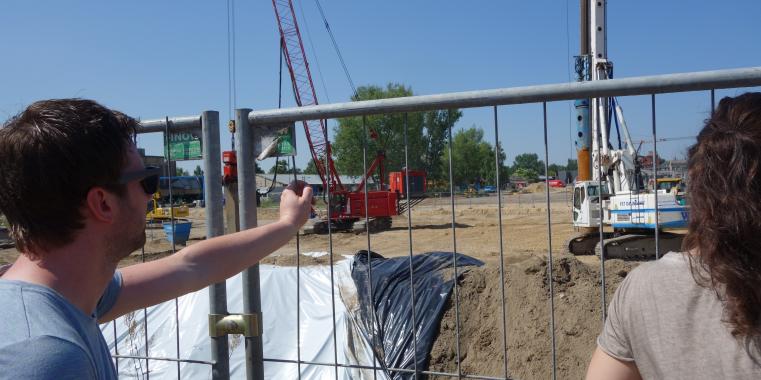
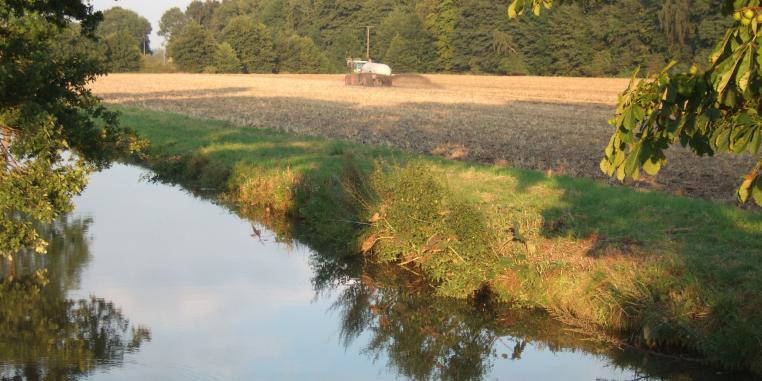
























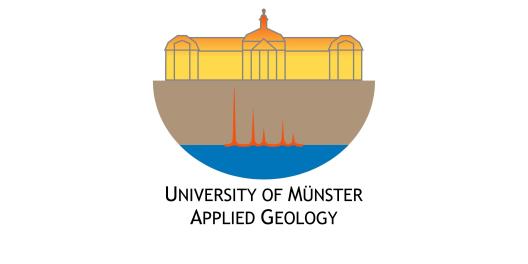
Research topics of Applied Geology in Münster are in the field of environmental pollutants in water and soil, environmental analytical chemistry and hydrogeology. The analysis and bioavailability of polycyclic aromatic compounds in soils, sediments and geosorbents are in focus. Other topics are polar pollutants and non-target analysis in surface water and groundwater on catchment scale.
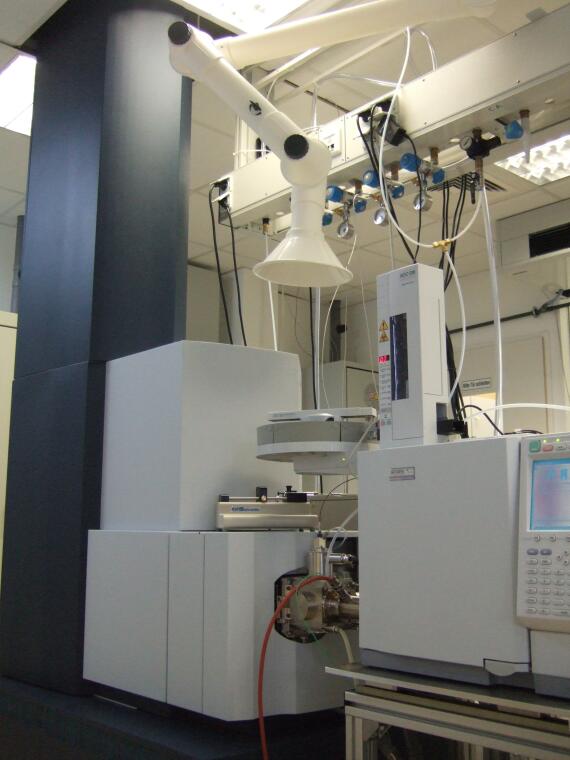

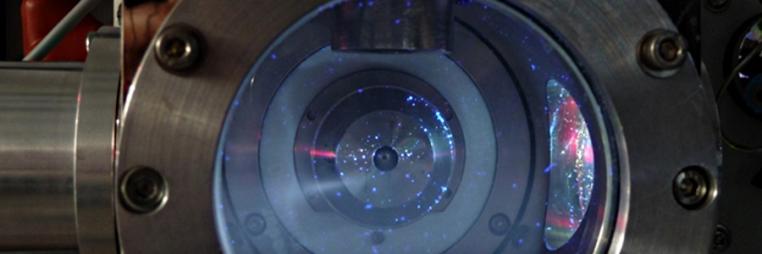
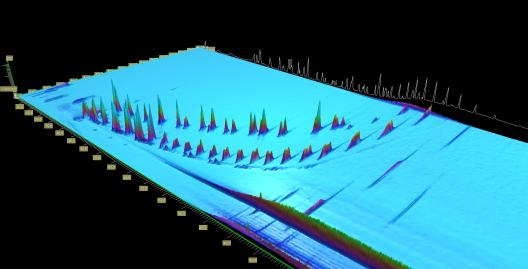
By use of gas chromatography – atmospheric pressure laser ionisation – ultra high resolution time-of-flight mass spectrometry (GC-APLI-UHR-QTOF-MS) polycyclic aromatic compounds (PAC) can be analyzed by a factor of about 1,000 more sensitive compared to common GC-MS. Various types of solid or liquid sample matrices can be analyzed, where either the available sample amount and/or the concentrations of the PAC are very low. The developed methods were tested by use of Standard Reference Materials and revealed true results.
If liquid chromatography is coupled to MS (LC-APLI-UHR-QTOF-MS), also >7-ring PAC can be analyzed at very high sensitivity. The analysis of even larger aromatic structures such as pyrogenic carbon (black carbon) e.g. by benzene polycarboxylic acid analysis (BPCA) is also in the focus in Münster.
Multi-component LC-ESI-UHR-QTOF-MS (Electrospray) analysis is used to measure pesticides, pharmaceuticals, metabolites and other more polar water pollutants.
Non-target analysis offers a promising method to gather by far more information about a sample compared to target analysis and is under development.
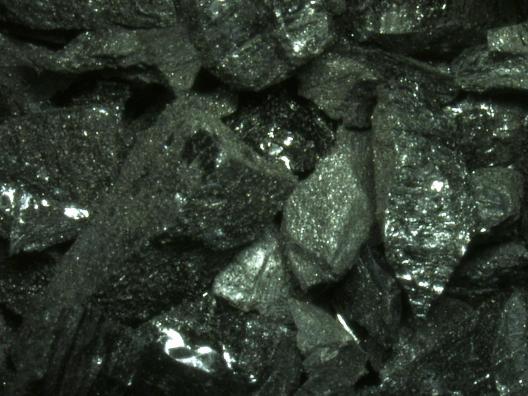
In the group of PAC including polycyclic aromatic hydrocarbons (PAH), alkyl-PAH, oxy-PAH, hydroxy-PAH, nitro-PAH, amino-PAH, etc. and NSO-PAC including alkyl-NSO-PAC, thousands of substances are summarized. The 16 EPA-PAH only represent a very small part of this group. The finding of dibenzo[a,l]pyrene being about 10 times more toxic compared to benzo[a]pyrene and of some other very toxic NSO-PAC point to the need for further study of less known PAC concerning (a) development of appropriate analytical procedures, (b) occurrence in the environment and (c) toxicity and bioavailability. Source identification of PAC in the environment such as biogenic, petrogenic and pyrogenic origin is another research subject in Münster. One focus are heterogenic coals that contain native biogenic and/or petrogenic PAH and can be additionally loaded by anthropogenic, e.g. pyrogenic PAH.
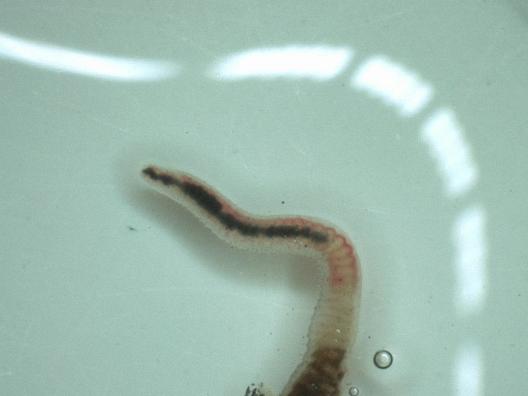
In the presence of effective carbonaceous geosorbents, hydrophobic organic pollutants, such as PAC, can exhibit significantly reduced bioavailability in soils and sediments. The widespread distribution of coal particles in surface and subsurface areas in mining regions are common and may impact soil quality due to present PAH. However, obviously, coal particles of varying rank and origin show effective PAH sorption, even within the body of some organisms including humans. This can lead to hardly any availability and accessibility to organisms, although, if the mobile phases from coals are extracted, these can exhibit extremely high toxicity. A physiologically based extraction test (PBET) for human oral uptake is one applied test system. Other geosorbents, such as some technogenic substrates which are often present in urban soils are also under investigation. Organic petrography is applied as it offers a unique opportunity for visualization and quantification of heterogenic carbonaceous geosorbents.
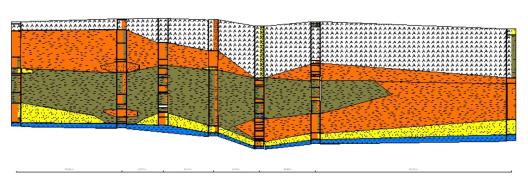
Monitored natural attentuation processes of e.g. mono- (BTEX), polycyclic aromatic hydrocarbons (PAH) and heterocyclic aromatic compounds at former manufactured gas plant sites are studied. Based on the geological, hydrogeological, geo- and hydrochemical situation, a conceptual site model is developed. Investigating hydrocarbon concentrations, compound specific isotopes (by CSIA), redox parameters and metabolites can elucidate if biodegradation occurs to a larger extent. In case, quantification of MNA processes is aimed at. A promising tool, the comparative non-target screening by LC-ESI-MS, is currently being developed.
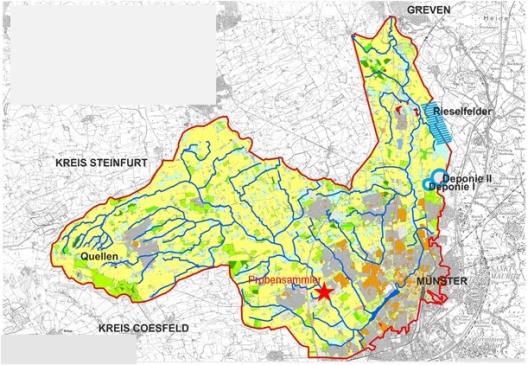
The Münsterland region is characterized by intensive agricultural land use including field applications of pesticides and manure from industrial livestock farming. The small river catchment of the Münstersche Aa is used to (1) characterize chemical compounds in the river water from agricultural sources vs. urban input (including surface runoff) vs. sewage input, (2) study the local hydrogeological and climate impact on the behavior and (3) identify less or unknown compounds of interest. A geological 3D model of the subsurface has been set-up for the city of Münster within the catchment and monitoring of pesticides, pharmaceuticals and inorganic compounds is being performed. Non-target analysis of organic compounds in the river water is currently under development.
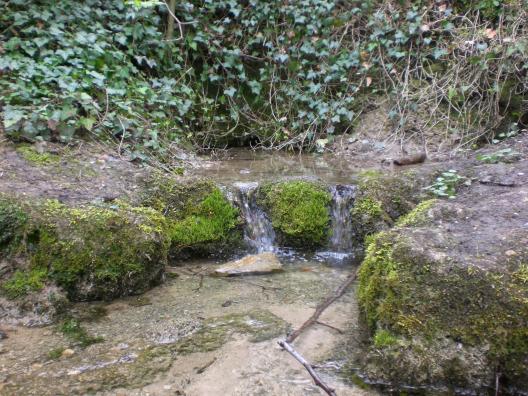
In the Münsterland area several closed hydrogeological systems - so-called "natural lysimeters" - with comparable structures (Baumberge, Schöppingen, Coesfeld/Darup, Bad Laer/Bad Rothenfelde, Seppenrade, Recklinghausen and further spring regions at the margin of the Münsterland area) are under cooperative multidisciplinary investigation: Hydrogeology including tracer tests, discharge studies, 3D-geological modelling and numerical groundwater modelling, hydrochemistry regarding anions/cations, TOC, stable isotope ratios of sulfate sulfur, oxygen, pesticides, pharmaceuticals and antibiotic resistance, spring ecology with respect to assessment of spring fauna and structure, microbiology and groundwater fauna, and finally "citizen science" based mapping of springs and touristic use of the springs.
For further information visit the project website: Springs of the Münsterland area
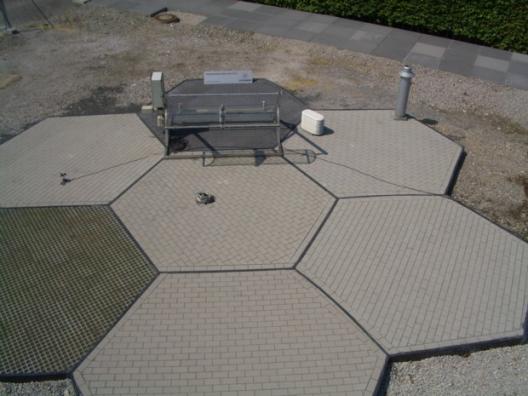
Near-natural storm water management in urban areas helps to conserve the natural water balance (quantitative aspects) and to protect soil, surface water and ground water from potentially hazardous substances (qualitative aspects). In urban areas, the ground water surface level is influenced by disturbed ground water recharge rates which are specific for different areas. Here, the extensive future use of enhanced water-permeable pavements can attenuate the urban water balance to the near-natural state. In urban areas, manifold anthropogenic substances – as storm water runoff with a high temporal and spatial variability – are discharged to soil, surface water and ground water. An assessment of emissions (patterns and concentrations of substances, distribution, amount of input, path and hydrogeological specific characteristics) as well as an assessment of immission is under research.